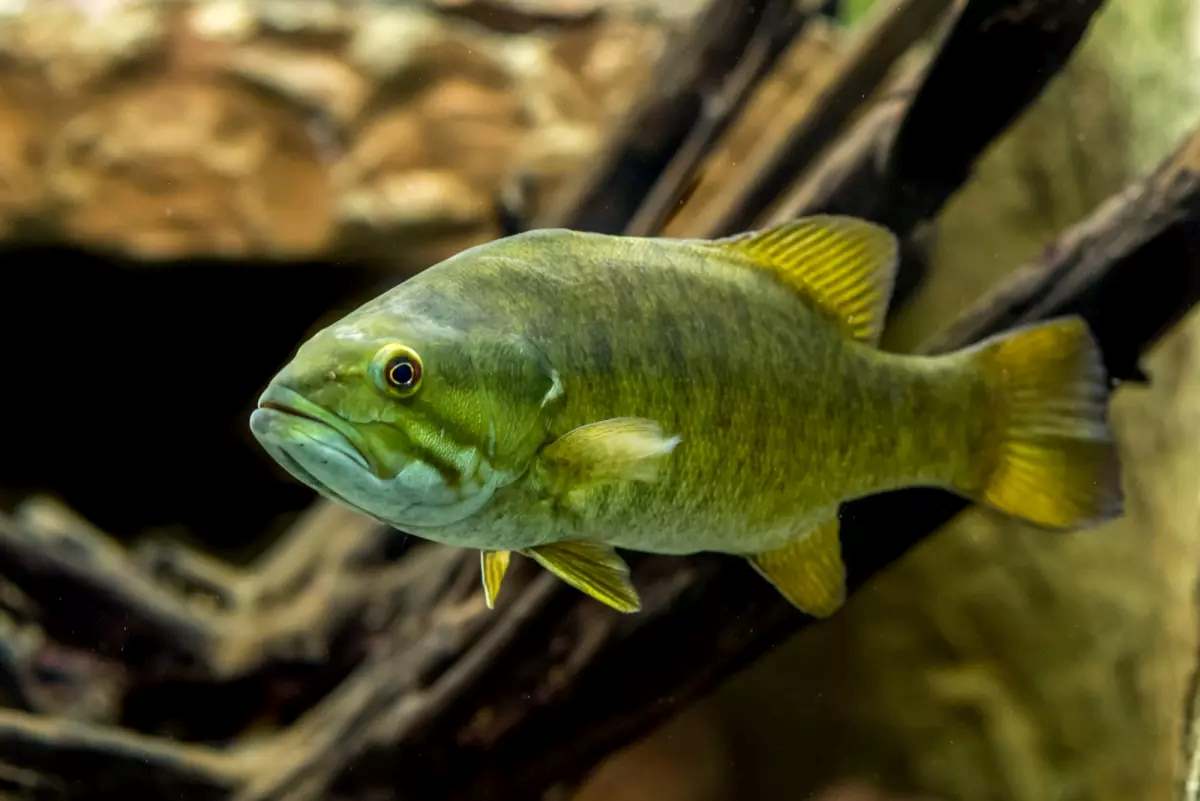Environmental process identifies preferred alternative to prevent expansion of smallmouth bass below dam and details revised protocol for high-flow experiments
 Smallmouth bass. Photo by Brett Billings, U.S. Fish & Wildlife Service
Smallmouth bass. Photo by Brett Billings, U.S. Fish & Wildlife Service
PAGE, Ariz. – The Bureau of Reclamation today released the Glen Canyon Dam Long-Term Experimental and Management Plan Final Supplemental Environmental Impact Statement that analyzes various flow options from Glen Canyon Dam to prevent the expansion of nonnative fish, primarily smallmouth bass. This document supplements the 2016 Long-Term Experimental and Management Plan Final Environmental Impact Statement and Record of Decision.
The proposed updates to the 2016 plan are in response to the increasing numbers of smallmouth bass in the river below the dam. These increased numbers include indicators of spawning. As Lake Powell’s elevation has declined, the warmest, top-most layer of the reservoir, where these nonnative, warmwater fish reside, has become closer to the dam’s water intakes. As a result, these predatory fish are more likely to pass through the dam and into the Colorado River. Additionally, when this warmer water is discharged from the dam downriver, it increases the water temperature of the river, creating ideal spawning conditions for these nonnative, warmwater fish. A smallmouth bass population in the Colorado River below the dam poses a significant risk to the federally threatened humpback chub.
“We still have time to prevent smallmouth bass from becoming fully established below the dam, but that’s only if we have a variety of tools available to us,” said Reclamation Upper Colorado Basin Regional Director Wayne Pullan. “Recognizing the ecological threat that smallmouth bass pose on the Colorado River downstream of Glen Canyon Dam, it is important that we have the ability, by adjusting the timing and other features of flows from the dam, to disrupt smallmouth bass spawning this season.”
Reclamation analyzed a range of reservoir releases with varying combinations of temperature and release volumes to assess their effectiveness in disrupting smallmouth bass spawning and preventing current populations from expanding.
Preferred Alternative
Reclamation identified the Cool Mix option as the Preferred Alternative. The actual selection of an alternative for implementation will not occur until the Record of Decision is signed. If needed, the selected alternative would be activated only when the average observed daily water temperatures, measured at river mile 61, exceed 60˚F for three consecutive days.
High-Flow Experiments
The document also includes potential modification of the protocol for conducting high-flow experiment releases, specifically adjusting sediment accounting periods and implementation windows. A high-flow experiment is a special release of water from Glen Canyon Dam that involves the powerplant and river outlet works to create high flows and water velocities that will suspend the sediment stored on the river bottom and transport it downstream to be deposited as sand beaches for riparian habitat, recreation campsites, and protection of cultural resources.
River Outlet Works
The flow options considered in the final document incorporate Reclamation’s recent interim operating guidance for Glen Canyon Dam. The interim guidance includes reduced capacities for the dam’s river outlet works when Lake Powell’s elevation is at or below elevation 3,550 feet. Reclamation’s recent most probable projections show Lake Powell staying above 3,550 feet through April 2026.
Background
Reclamation undertook an environmental assessment in August 2022, and released the draft, titled Glen Canyon Dam Smallmouth Bass Flow Options, for public comment on February 24, 2023. Reclamation concluded that additional analysis was warranted.
Glen Canyon Dam impounds Lake Powell, the largest reservoir in the Colorado River Storage Project. In February 2024, Reclamation, in coordination with federal agencies, states, tribes, cooperating agencies, stakeholders and other interested parties, released the draft supplemental environmental impact statement. The draft incorporated comments submitted during a public scoping period and the public comment period associated with the original environmental assessment.
Reclamation will publish the Long-Term Experimental and Management Plan Final Environmental Impact Statement in the Federal Register on Friday, May 31, 2024, formally initiating the 30-day public review period.
The 2016 document and this supplement involve the timing of hourly, daily, monthly and experimental releases from Glen Canyon Dam, but not annual releases. Annual releases are currently controlled by the 2007 Colorado River Interim Guidelines, which has been supplemented by the Supplemental Environmental Impact Statement for Near-term Colorado River Operations Record of Decision. Those guidelines, along with the 2019 Drought Contingency Plans, expire at the end of 2026. A separate, ongoing planning process to develop post-2026 guidelines is underway.


